Chloe has started a Flickr group for antique irons and trivets
so I firstly had to dig out my granny's irons for some photographs:
I'd puzzled over the name on two of them, the iron had eroded and it was difficult to read, but the symbol under the name was the same as the one on Chloe's iron, so these two of mine are clearly Salter irons as well. In addition to the Salter name and symbol is Silvesters Patent.
I really need to do some research on these.
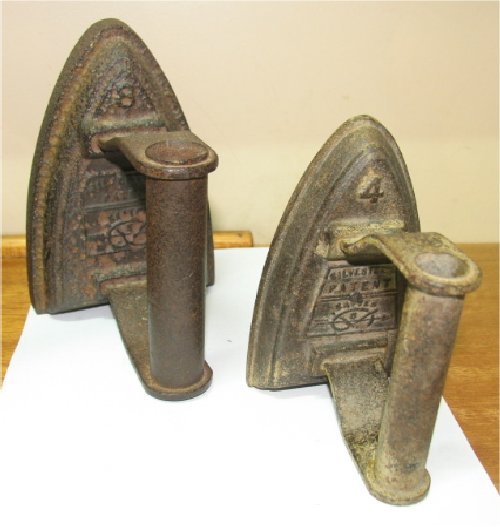
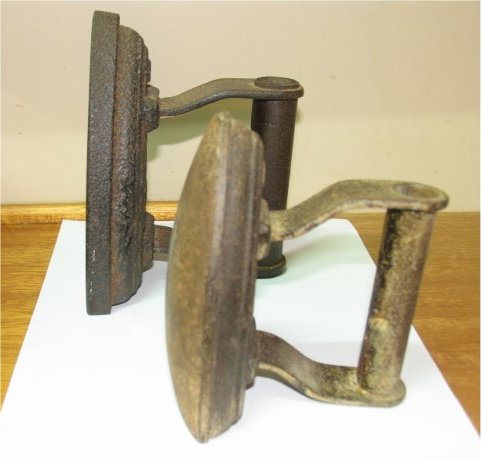
The one at the back is a flat iron and at the front is a polishing iron, it has a rounded base.
After pressing stiffly-starched collars and shirt fronts, one polished them by dampening the surface very slightly and rubbing the hot polishing iron backwards and forwards over the work at great speed.
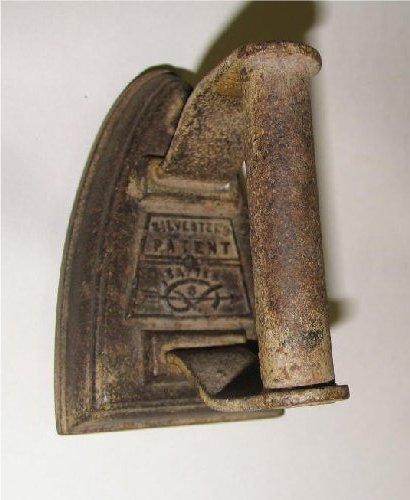
this next is another polishing iron

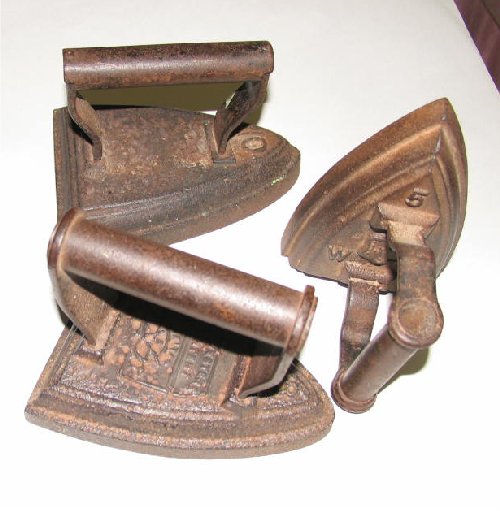
this shows all three of my flat irons together, the one at the back has no brand and the iron on the right is also corroded and hard to read - again, I think some research will turn up the correct brand.
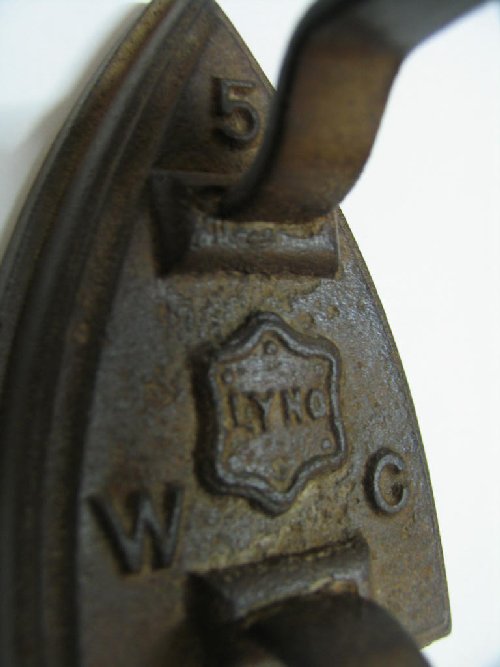
Lastly is this little one, it was given to me to play with when I was a child, I don't know if it was originally a child's toy, or maybe for a young girl to use to learn domestic skills - can't say it did much to improve mine! and I was certainly never allowed to heat it on the stove, which, given my record with hot things, was probably for the best
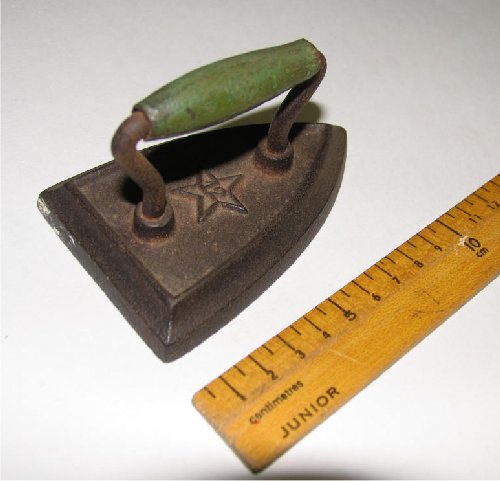
additonal:
have just been looking at the Powerhouse Museum site (Sydney) and found my Salter iron - it's called a 'sad iron'and is circa 1890-1900's
http://www.powerhousemuseum.com/collection/database/?irn=262885&search=iron
...and I'm not sure now about my 'goffing' iron (that was what my mum called it) I've found a 'goffering' iron that looks nothing like mine - still looking
found a little clipping on irons from The Australian Home Beautiful 1965 (it pays to be a hoarder!)
what I had been calling a goffing iron is really a polishing iron - after pressing stiffly-starched collars and shirt fronts, one polished them by dampening the surface very slightly and rubbing the hot polishing iron backwards and forwards over the work at great speed.
The flat irons were heated on top of a stove.
For best results they had to be rubbed over bathbrick, then over sacking impregnated with paraffin wax, and finally dusted. Heat was lost fairly quickly, so changes were frequent.
I looked up bathbrick and it seems to be a powdered brick similar to pumice - it's used today by bookbinders when working with gold leaf, they put it on the cutting pad to prevent the gold leaf sticking to the pad.
Goffering tongs were scissor shaped with round 'blades' - after a frilled garment had been ironed, the tongs were used to produce a fluted effect to the fullness of the frill.
And in the days before irons? in Scotland the laundry was beaten flat and smooth with an implement rather like a rolling pin with one handle, called a 'beetle'
who would want to be a washerwoman?

6 comments:
Oh these are soooooo beautiful. I think I have spotted a Lyko (or similar) somewhere in the collection on which I am working. Hang on ....
No - I don't have the details here. But one of the Trivets may actually be that.
This is fun - have you got any old sewing machines?????
yes, I've got sewing machines, I'll do those next
also found that what I thought was a 'goffing' iron is a polishing iron (with the rounded base)
My mum has one like this kind. I always think it looks so ugly, but now I've learned to appreciate its beauty. Think I'd call my mum and save it.
Lucia, I used to think the same, they were just the ugly old irons my mum used for doorstops, until I started to catch up to mum in age (grin) and developed that appreciation
Hello, I found one in the grass on my trip to England old Salter flat iron No 4, no silvesters´s patent. Very good condition. If you know something about that, send me email, I can send you photos.
Kristina - kristina.matusova(at)gmail.com
sorry Kristina, I haven't been able to find out any more about the Salter irons
Post a Comment